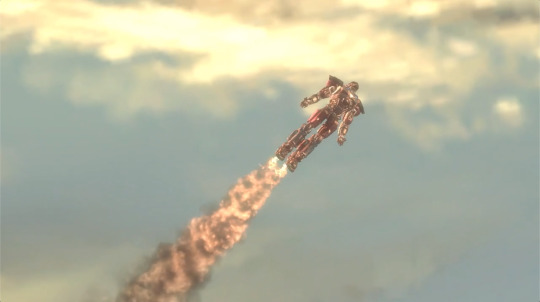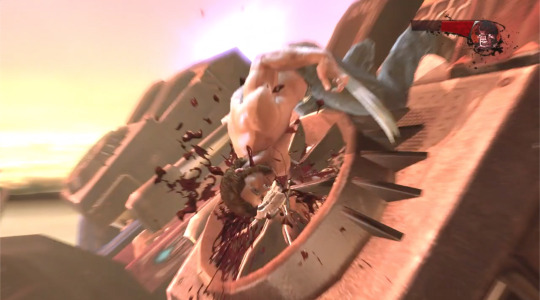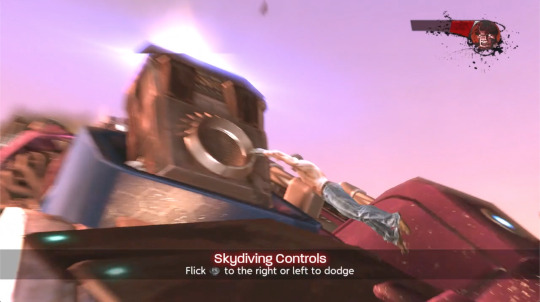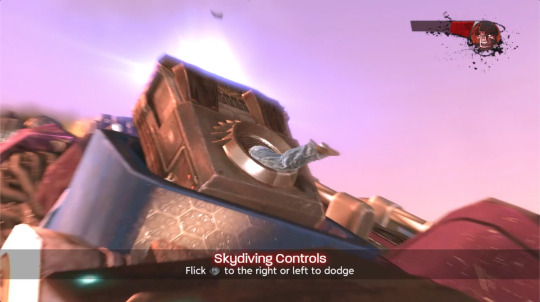Photo

When you’re looking like class and he’s looking like trash.
4 notes
·
View notes
Photo


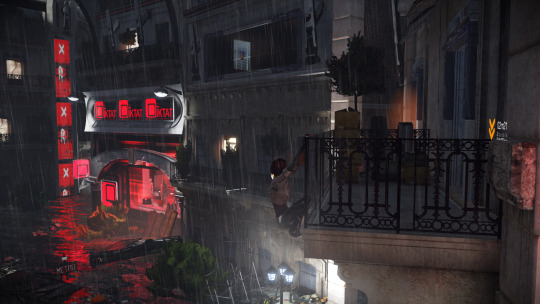

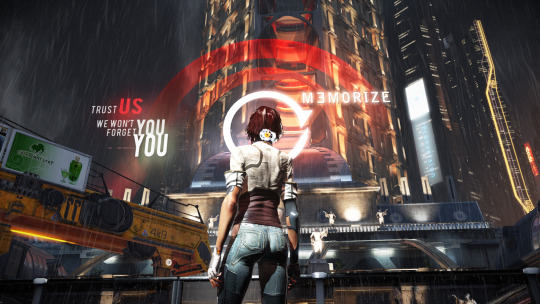
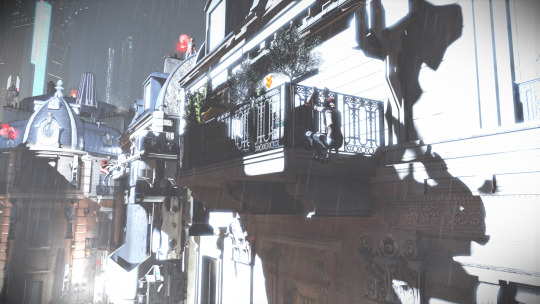
Remember Remember Me.
92 notes
·
View notes
Text
2020 Recap - My Year in Gaming

2020. What a year for video games. I had big plans for last year, but in the end I did very little besides play video games, and I don’t think I’m alone there since we were all stuck at home looking for a way out of reality. I wanted to do a year-end recap as I’ve done sporadically in past years, but this one will be different than the typical “Games of the Year” format because despite all the games I played in 2020, almost none of them came out in 2020, and some of the things that defined my year in gaming weren't even games.
Resident Evil 3 Remake (PS4)

RE3 was one of the only games I played in 2020 that didn’t coincide with the deadly pandemic's spread across the US. RE3 is, of course, a game about the spread of a deadly virus in Anytown, USA. It was an appetizer, I guess.
When the Resident Evil 2 remake dropped in 2019, there were some things I loved about it, and a few things that felt like steps back from the original. I feel much the same about RE3. I had also theorized that a Resident Evil 3 remake would be better off as RE2 DLC than as a separate full-length game, and considering how short RE3 turned out, with some of the best sections of hte original cut entirely (namely, the clock tower), I stand by my theory.
Oh well, at least Jill gets this rad gun, which for the time being is the closest thing to a new Lost Planet we can hope for anytime soon.

Sekiro (PS4)

Sekiro is the first video game I ever Platinumed. This is partly because conquering the base game was such a spartan exercise that going the extra mile to get the Platinum didn’t seem so bad, but it’s also surely a result of the pandemic. I needed a project and a big win. Who didn't?
I wrote at length about why I like Sekiro more than every other modern FromSoft game, and also about the game’s cherry-on-top moment that reminded me of blowing up Hitler’s face in Bionic Commando. Please read them!
Death Stranding (PS4)
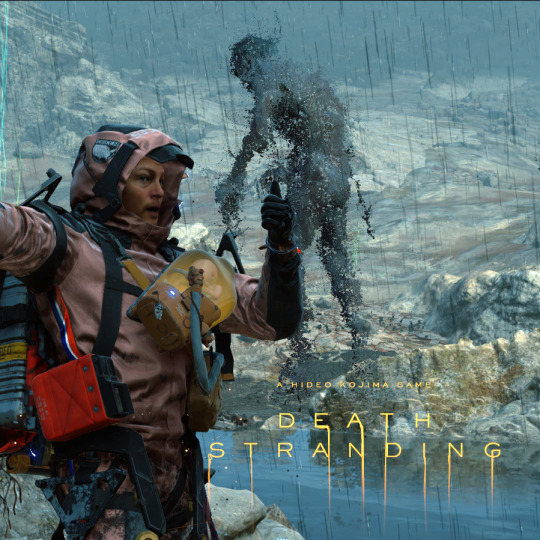
Release date notwithstanding, this was obviously the Game of 2020. I wrote about it here, here, and here. This game bears the distinction of being the second one I ever Platinumed. It took 150 hours. Only then did I learn I had a hoverboard.
Streets of Rage 4 (PS4)
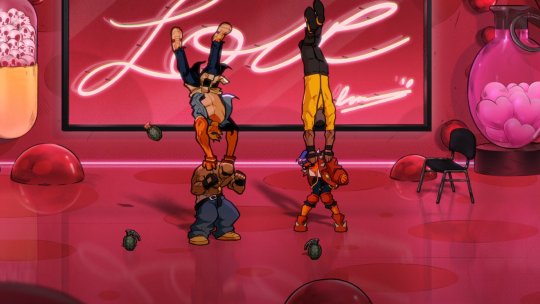
This is the only 2020 game I played for more than a few hours. In fact, I cleared the entire game at least five times. I still don’t think it captures the gritty aesthetic of the prior Streets of Rages (nor even tries to), but this is probably the best-feeling bup I've played. Huge bonus points for finally bringing back Adam, but in the end I found it hard not to pick Blaze every time.
Blaster Master Zero 2 (Switch)
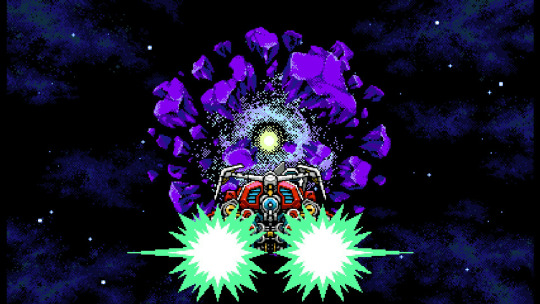
What impressed me about this sequel from Inti Creates was that it wasn’t just more of the same, even though that would've been fine. BMZ2 builds on its already excellent predecessor with a catchy new format where players can freely cruise the cosmos and stages take the varied form of planets—some big and sprawling, others short and sweet. Hopping at will from planet to planet without ever knowing what experiences and treasure each one held felt like system jumping in No Man’s Sky and island hopping in The Legend of Zelda: Phantom Hourglass, both of which felt like opening presents.
Dragon Force (Saturn)
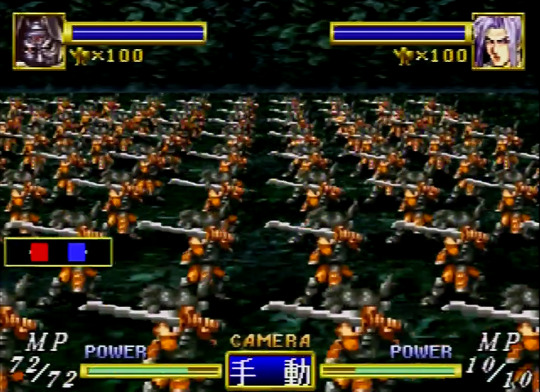
Charming, satisfying, and addictive as a bag of chips. Unlike a bag of chips, when it’s over, you can do it all again. And again. And it’ll be different each time! This might be the first strategy game I've truly loved. Better late than never.
The PC Engine Mini
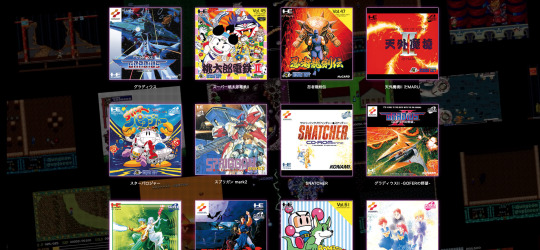
The PC Engine/TurboGrafx-16 Mini seems a particularly justifiable mini-console for people outside Japan because so many missed these consoles entirely, the games are hard to obtain, and the lineup includes titles spanning the entire convoluted Turbo/PC Engine ecosystem—the TurboGrafx-CD/CD-ROM², Super CD-ROM², Arcade CD-ROM² and SuperGrafx, in addition to plain, old standard HuCard games. I myself didn’t know the first thing about these systems before. It’s like reliving the nineties again for the first time.
Most of the titles included are simple action games that don't require a command of Japanese, but make no mistake: being able to understand Snatcher and TokiMemo does make me feel like an elite special person worth more than many of you.
(Side note: From a gender representation perspective, the difference between Snatcher and Death Stranding is stark. Virtually every interaction with every woman or girl in Snatcher is decorated with ways to sexually harass her. Guess someone finally had a conversation with our favorite auteur.)
A Gaming PC
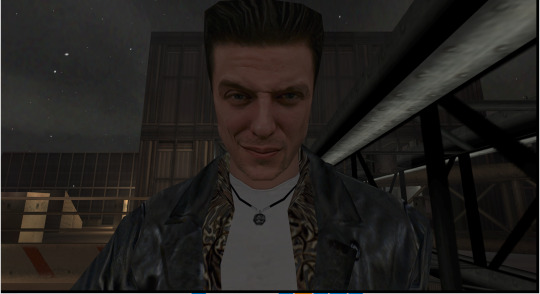
I’d threatened to transition to PC gaming for years after beholding the framerate difference between the console and PC versions of DmC in 2012, and last July I finally took the leap, buying an ASUS “Republic of Gamers” (ugh) laptop with an NVIDIA GeForce RTX 2070 Max-Q GPU. It seems like consoles are getting more PC-like all the time, especially with all these half-step iterations that splinter performance and sometimes even the feature set (à la the New 3DS and Switch Lite), so with the impending new generation seemed like a fine time to change course.
In the half-year since, I’ve barely played a single PC game more recent than 2013, but just replaying PS3-era games at high settings has been like rediscovering them for the first time.
I also finally experienced keyboard-and-mouse shooting and understand now why PC gamers think they're better than everyone else. Max Payne is a completely different game with a mouse. Are all shooters like this??
The USPS

Early in the year, I rediscovered my childhood game shop, Starland, which is now an online hub known as eStarland.com with a brick-and-mortar showroom. To my delight, it has become one of the best and most modestly priced sources for import Saturn games in the country, and I scored Shining Force III’s second and third episodes, long missing from my collection, for a mere ten bucks each!
In June, I treated myself to a trio of Saturn imports from eStarland: the tactics-meets-dating-sim mashup Sakura Taisen 2, the nicely presented RTS space opera Quo Vadis 2, and beloved gothic dungeon crawler Baroque. Miraculously, this haul amounted to just around thirty dollars total. Less miraculously, they never arrived. This was the second time I’d had something lost in the mail in my entire life, and also the second time that month. Something was wrong with the USPS, and it wasn’t just COVID pains. We would soon learn Trump had been actively working to sabotage one of the nation’s oldest and most reliable institutions in a plot to compromise the upcoming presidential election.
Frankly it’s a miracle there’s still such a thing as “delivery” at all, and a few missing video games is the last of my worries considering what caused it, but nevertheless this was an experience in my gaming life that could not have happened any other year. I won’t forget it.
*By the way, USPS reimbursed me for the insured value of the missing order, which was fifty bucks. So I actually profited a little off the experience.

Mega Everdrive Pro
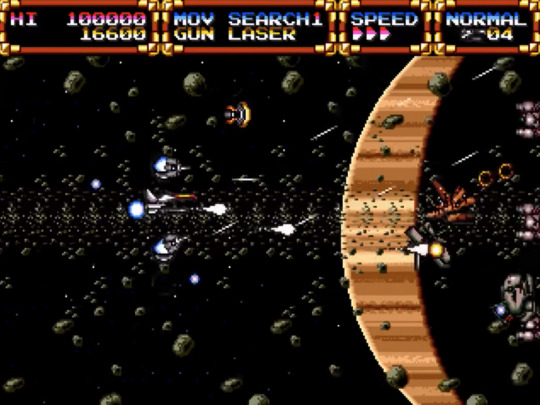
I love collecting for the Genesis and Mega Drive, but I will not pay hundreds of dollars for a video game that retailed for about sixty. The publishers never asked for that, and the developers won’t see a (ragna)cent of the money. I'm also far less inclined to start collecting for Sega CD, since the hardware is notoriously breakable, the cases are huge and also breakable, and the library just isn't that good.
Still, I'd been increasingly curious about the add-on as an interesting piece of Sega history, so when I learned Ukranian mad scientist KRIKzz had released a new Mega Everdrive that doubled as a Sega CD FPGA, I finally took the plunge into the world of flash carts. This has proven a great way to play some of the Mega Drive’s big-ticket rarities I will never buy—namely shmups like Advanced Busterhawk Gley Lancer and Eliminate Down—as well as try out prospective additions to the collection. I never would have discovered the phenomenal marvel of engineering and synth composition that is Star Cruiser without this thing, but now that I have, it’s high on the shopping list.
The Mega Everdrive Pro is functionally nearly identical to TerraOnion’s “Mega SD” cartridge, but slightly less expensive, comes in a “normal” cartridge shell instead of the larger Virtua Racing-style one, and supports a single hardworking dude in Ukraine rather than a company with reportedly iffy customer service.
Twitch
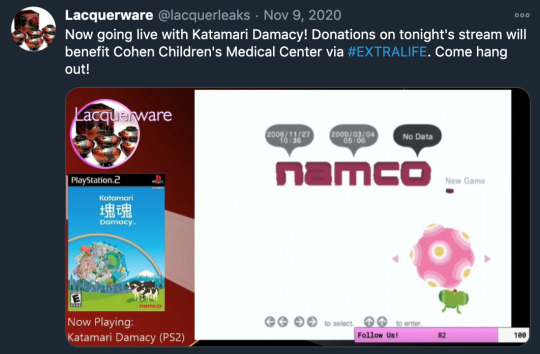
Getting a PC also resolved issues that had long prevented me from achieving a real streaming setup, and much of my gaming life in 2020 was about ramping up my streaming efforts. I even made Affiliate in about a month. Streaming has been a great creative outlet and distraction, as well as a way to connect with other people during the COVID depression and structure my gaming time. Find me every Monday through Thursday 8-11pm Eastern at twitch.tv/lacquerware.
Metroid: Other M (Dolphin)
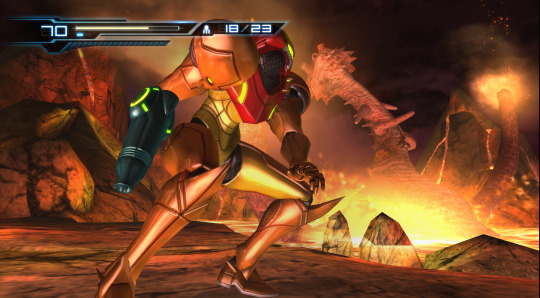
PC ownership also gave me access to the versatile Dolphin emulator, liberating a handful of great Wii exclusives from their disposable battery-powered prison.
One of the Wii games I fired up on Dolphin was Metroid: Other M, a game I’d always wanted to try but had been dissuaded by years of bad publicity and the fact that I never had any goddamn batteries. I know I should temper what I’m about to say by acknowledging that I was playing at 1080p/60fps on a PS4 controller so my experience was automatically a vast improvement over that of all Wii players, but I’m increasingly confident Metroid: Other M was the most fun I’ve ever had playing a Metroid game. I haven’t decided yet if I’m willing to die on this hill, but I will just say that if you like the Metroidvania genre in general and aren’t particularly attached to the Metroid series’ story or its habit of making you wander aimlessly for hours, there’s a very high chance you will enjoy Other M—especially if you play it on Dolphin.
Don't Starve Together (PC)

Don't Starve is the only game my friend Jason plays, so last year I tried to get into it with him. I respect this game's singular devotion to the concept of survival, but make no mistake: every session of Don't Starve ends with you starving to death. Or freezing. Or getting stomped by a giant deity of the forest. The entire game is staving off death until it inevitably comes. Even when death comes, you can revive infinitely (in whatever mode we were playing), which means even death is not an end goal. There is no end goal. You don't even have the leeway to "play" and create your own meaning as you do in similarly zen games like Dead Rising.
Don't Starve is a game for people for whom hard work is the ultimate reward in and of itself. Don't Starve told me something about Jason.
G-Darius (PS1)
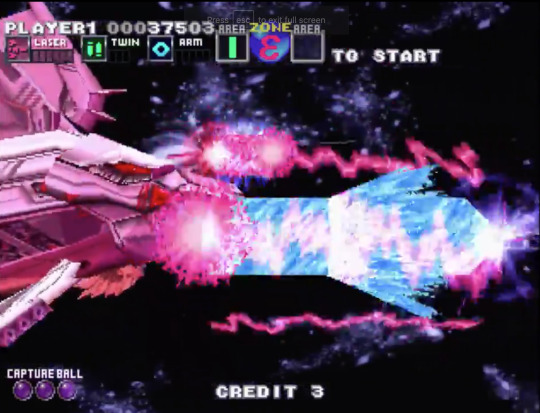
In the early fall, Sony announced they were dropping PS3, PSP, and Vita support from the browser and mobile versions of their PSN Store, and since the PS3 version of the store app runs like a solar-powered parking meter in Seattle, I decided this was my last chance to stock up on Japanese PSN gems.
Among my final haul, the PS1 port of G-Darius proved an instant favorite. Take down the usual cast of mechanized fish in a vibrant, chunky, low-poly style that perfectly inhabits the constraints of the original PlayStation hardware. I believe this is the first Darius game that lets you get into giant beam duels with the bosses, which is quite definitely one of the coolest things a video game has ever let you do. The PS1 port is also surprisingly feature-rich, including some easier difficulty levels that present an actually surmountable challenge for non-savants.
This one’s coming to the upcoming Darius Cozmic Revelation collection on Switch alongside DARIUSBURST, a good-ass romp in its own right.
Red Entertainment
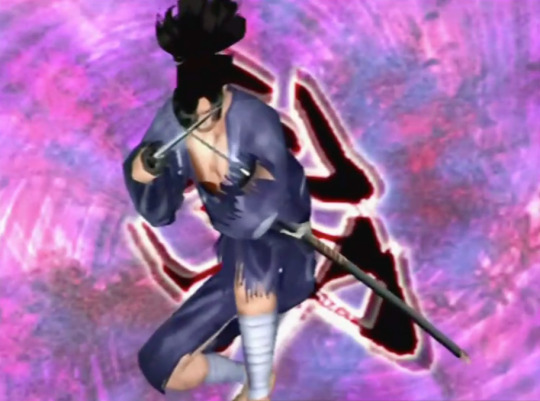
In my effort to shine a tiny spotlight on some of the unsung Interesting Games of gaming, I found myself drawn again and again to the work of Red Entertainment. First there were cavechild headbutt simulator Bonk’s Adventure and twin shmups Gates of Thunder and Lords of Thunder on the PC Engine Mini. Then I streamed full playthroughs of the PS2’s best samurai-era, off-brand 3D Castlevania, Blood Will Tell and the Trigun-adjacent stand-‘n-gun, Gungrave: Overdose. Then I was dazzled by Bonk’s Adventure’s futuristic spin-off cute-‘em-up, Air Zonk, which was also sneakily tucked away on my PC Engine Mini in the “TurboGrafx-16” section. It turned out all these games were made by the same miracle developer responsible for Bujingai, the stylish PS2 wushu game starring Gackt and a household name here at the Lacquerware estate. How prolific can one team be???

Month of Cyberpunk
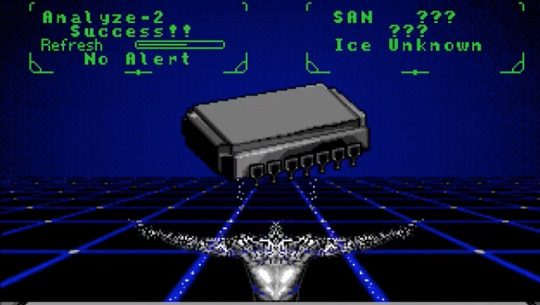
In November, I started toying with the idea of themed months on my Twitch channel with “Cyberpunk month.” It was supposed to be a build-up to Cyberpunk 2077’s highly anticipated November release, but holy shit that didn’t happen, did it? Still, I always find myself gravitating toward this genre in November, I guess because I associate November with gloom (even though this year it was sunny almost every day). A month is a long time to adhere to a single theme, but cyberpunk is such a well-served niche in gaming that I could easily start an all-cyberpunk Twitch channel. The fact that we’re so spoiled with choice makes Cyberpunk 2077’s terrible launch all the more embarrassing. Here are just some of the games I played (and streamed!) in November:
Ghostrunner
Shadowrun (Genesis)
RUINER
Remember Me
Transistor
Rise of the Dragon (Sega CD)
Shadowrun (Mega CD)
Cyber Doll (Saturn)
Binary Domain
Shadowrun Returns
Blade Runner (PC)
Deus Ex: Human Revolution
Deus Ex: Mankind Divided
Observer
Shadowrun on the Genesis gets my top pick, but the two most recent Deus Ex games are great alternatives for those looking for something in the vein of 2077 that isn’t infested with termites.
Lost Planet 2
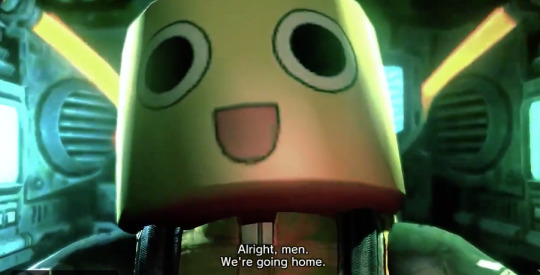
Every year. I played through it twice in 2020.
Dead Rising 4

I slept on this one too long. While it's a far cry from the original game, it's easily the most fun I've had with a Christmas game since Christmas NiGHTS. This is the game a lot of people thought they were getting when they bought the original Dead Rising with their new Xbox 360--goofy, indulgent, and pressure-free.
Devil May Cry 5: Vergil (PS4)

Vergil dropped for last-gen consoles in December and breathed a whole lot of life into a game that was already at the head of its class.
Nioh 2
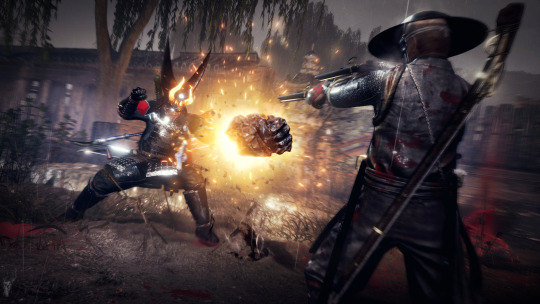
I’ve only played a few hours of Nioh 2 because I promised my friend I’d co-op it with him and wouldn’t play ahead. But he’s a grad student with two small children. Nevertheless, Nioh 2 is my Game of 2020.
And that's it! Guess I'll spend 2021 playing games that came out last year, and maybe eventually getting vaccinated? Please?
#2020 year in review best of games of the year game of the year goty recap lacquerware death stranding sekiro darius g-darius video games gam#dragon force#2020#year in review#best of#games of the year#game of the year#goty#recap#review#lacquerware#death stranding#sekiro#darius#g-darius#video games#games#gaming#nioh#nioh 2#devil may cry#devil may cry 5#dmc5#vergil#dead rising 4#dr4#frank west#christmas games#lost planet#lp2
11 notes
·
View notes
Text
Sekiro has one big similarity to Bionic Commando, and it's not what you think
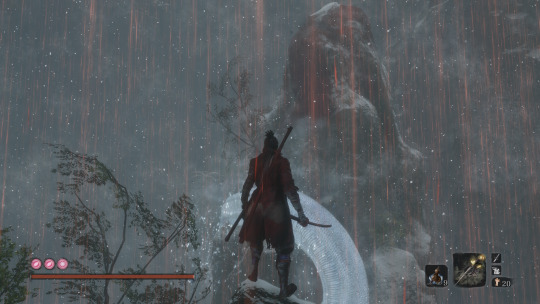
Spoiler Warning: Sekiro, Bionic Commando (NES)
Progress in Sekiro is meted out through challenging boss fights and punctuated with scenic, relatively safe traversal sequences that enhance the sense that you’re on a textured journey that’s headed somewhere. Fairly early in the game, after you’ve found your initial footing and conquered a few lifebars bearing fancy names, the game pulls a fast one on you: As you’re scaling some cliffs to get to the next part of the game, a snake roughly the size of Godzilla glides into view—filling your view—and looks at you like you’re the last donut hole in Boston. What was supposed to be a rejuvenating slice of downtime is suddenly the most stressful situation Sekiro has placed you in so far. A harrowing stealth sequence ensues, where you must divide your time between hiding and madly dashing for the next hiding spot.
Eventually you escape into a cave and get on with your life without confronting the beast, but a new seed of anxiety has started to sprout; eventually you’ll have to confront this thing. It’s Sekiro’s way of shaking the confidence you’ve spent the first chunk of the game building. “You think you’re all that because you beat an eight-foot ogre who started the fight in shackles? Sit back down, insect.”

From then on, the Great Serpent becomes a sort of sinister mile marker, dividing your journey broadly into acts with recurring reminders that your successes don’t mean you’re not still a tiny worm on a giant fucking cosmic hook. At one point it ambushes you on a rope bridge, leaving you floating helplessly in the water below. Another time, you find its shed skin adorning the scenery.
In my many hours and playthroughs with Sekiro, I’ve come to learn that there is some variation to the order in which the game’s key events may unfold, but on my first playthrough, I’d done just about everything possible before finally emerging from that Sunken Valley cavern to find the Great Serpent nestled asleep on a cliffside a few hundred feet below. I’d acquired the Mortal Blade as well as all the ingredients for the Fountainhead Incense. The dreaded Guardian Ape was dead, then undead, then dead-dead. It was clear I was about to enter a new, late phase of the game, but then there she was, once again laying watch over my only path forward.
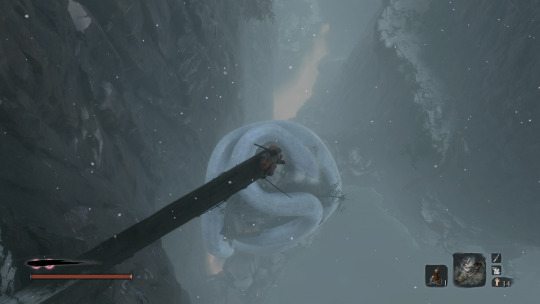
I edged forward on the overlooking wooden beam, scanning for grapple points or other escape options. There were none, but I was startled to find I could lock onto the slumbering Serpent’s head. Ah, I thought. This is the fight I’ve been dreading all along. Nothing left but to walk the plank and wake the dragon. I gulped, wiped the sweat off my palms, and dove . . . .
As I plunged, I was again startled to see the familiar red smudge of a Deathblow opportunity appear on the Serpent’s head. I spewed some fragments of syllables as my finger scrambled for the R1 button. It registered and Sekiro readied his sword in midair. Unexpected as this was, it occurred to me that many boss fights had begun this way, with a Deathblow opportunity that knocked off one of the boss’s multiple life bars. There was no special reason to think this would preclude a grueling fight, until, that is, Sekiro tore his sword through the Serpent’s uncaring reptile brain, drenching the entire landscape in a downpour of strawberry rhubarb jam and leaving the Serpent a dangling dead decoration. The fight was over before it had begun.
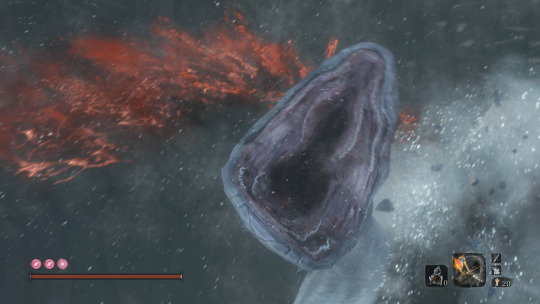
I’ve already commended Sekiro for being FromSoft’s first game in the “Souls” template not to be centered around discouragement, but this dramatic display of leniency was downright motivational. It was like your drill sergeant surprising you with a pizza party instead of the expected twenty-mile march.
“It’s fucking dead?!” I said out loud to my wife in the other room.
“What’s dead?”
“A snake in a video game.”
“Oh.”
But to me it was astounding. This colossal demon, whose prime function up to now had been to keep my confidence in check, had now fallen to my little blade in one of the most spectacular shows of player triumph I’d seen in my more than thirty years of gaming. What I’d thought was the game’s way of saying “You’ve haven’t accomplished as much as you think you have” was ultimately the game’s way of saying I’d accomplished more. Even this impossibly large beast, this divine manifestation of terror itself, which had made every other adversary look puny and insignificant, was now dead. What a shot in the arm! There was no stopping me now.

After finishing Sekiro, I realized this moment had been instrumental in creating the lasting impression that, unlike Dark Souls and Bloodborne, Sekiro never seeks to discourage or punish. It also contributed heavily to the dynamic contour of the whole experience, which is a major thing I think Sekiro has over my beloved Nioh. It aspires and succeeds at being more than a game with a predictable loop—it’s an odyssey of diverse sights and experiences, and the Great Serpent kill feels like the centerpiece. My favorite moment of Sekiro.
Some time later, I had a shower thought: Bionic Commando on the NES, one of my all-time favorite games, had done something very similar more than thirty years prior. The Japanese version of the game includes Hitler’s Resurrection (ヒットラーの復活) right in the title, but in America it’s not until the climactic showdown that you even know it’s a game about defeating Hitler. Until then, your ostensible adversary is Generalissimo Killt, an imposing, sneering, decorated man with all the trimmings of a fictional fascist. He taunts you face-to-face early on in one of the game’s RPG town-esque neutral zones, where you have no recourse even though your bionic arm could surely crush his skull like a grape in a condor beak.
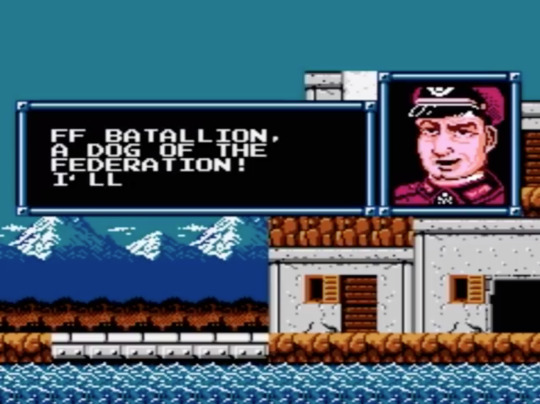
When you finally meet again, Killt stands regal before a towering stasis chamber with a human figure floating within. He says something menacing about “Master-D” and a “revival device,” makes a threat on your life, and then the encounter is cut short by an apparent electrical malfunction. With a powerful jolt, the device unceremoniously kills Killt before he can even try to make good on his threat.
The floating figure within the chamber slowly emerges and speaks. Despite his censored name, the pixelated portrait that accompanies his dialogue box is unmistakable—an eerily lifelike rendering of Adolph Hitler. I was six or seven when I first witnessed this moment, but thanks to Mom’s yearly Yom Kippur tradition of breaking out the Holocaust picture book, Hitler’s stony visage was already imprinted upon my brain. He was my boogeyman, the subject of recurring nightmares, and now somehow he’d invaded my video game. This real-life association made him formidable in a way no other video game villain could touch (no, not even Mike Tyson). It was personal and terrifying in a way no game had been. In an instant, the stakes of this adventure soared sky-high. Hitler was the Great Serpent, a terrible titan sent to ambush your confidence.

After his grand entrance, Hitler unleashes upon you the “Albatros” [sic], a hulking, amorphous war machine outftitted with rhythmically spewing flame vents and a pulsating organ. A tense fight ensues, putting your swinging and shooting skills to the ultimate test. Finally, the Albatross explodes in a screen-filling spectacle of pyrotechnics, and you emerge on an elevated precipice just in time to hear the dying words of a wounded comrade, Hal: Hitler is getting away in a chopper, and it’s up to you to stop him. Even the ultimate test had fallen far short of stopping this monolithic evil.
Hal hands over a bazooka and instructs you to aim for the chopper’s cockpit as you leap from the precipice. You edge forward, scanning for grapple points. You gulp, wipe the sweat off your palms, and swing . . . .

As you plunge, you fire off a single shot. It strikes the glass. You land.
“Your number’s up! Monster!”
Now bear in mind that up to this point, only the weakest enemies in the game had died in one hit. And this wasn’t just any adversary; this was the biggest possible bad. As with the Great Serpent, there was no special reason to think this one shot would preclude a grueling fight, until, that is, Hitler’s cranium exploded in a starburst of strawberry rhubarb jam, the gory detail intricately rendered in four disgusting frames of diverging skin, teeth, and eyeballs.

The fight was over before it had begun. What appeared at first to be a demoralizing escalation of the game’s peak, was in fact a spectacular way to pat you on the back for making it this far. It's like they shoehorned Hitler into the game at the last minute just to let you blow his head up. For a little Jewish kid, that was just about the tastiest proposition a video game could offer.
The more I ponder these two moments, the more they feel like twins. The dissonance of the antagonists’ grandeur with the world they inhabit. The ease with which you reveal both to be false gods. The extreme use of gore to convey the weight of your achievement. They even both hinge on a do-or-die attack performed in free fall. Considering Sekiro also stars a grunt with a bionic arm, I have to wonder if there weren’t some Bionic Commando fans involved in its conception.

#sekiro#bionic commando#games#gaming#video games#videogames#fromsoftware#from software#fromsoft#activision#theory#games criticism#review#gameplay#game design#design#great serpent#snake#ekans#bionic arm#rad spencer#spencer#nes#retro#retro gaming#capcom#grappling hook#hitler#adolph#explode
9 notes
·
View notes
Photo

Man, I sure miss feeling like we had a general consensus about what you do with fascists.
#bionic commando#rearmed#bcr#capcom#fuckfascists#nathan spencer#rad spencer#bionic arm#head explode#explod#remake#ending#hitler#generalissimo killt
9 notes
·
View notes
Text
Death Stranding wrote my essay

Apart from its striking relevance to current events, Death Stranding also holds a personal relevance for me that’s equally uncanny.
Last year, after three years of unrewarding freelance work, I moved to Brooklyn to study writing and reset my life’s trajectory. I joined a small, intensive writing workshop that sounded like an exciting way to develop my skill and connect with other writers in the New York scene. It would be the entry point to a new community that I so badly needed after three years of isolation.
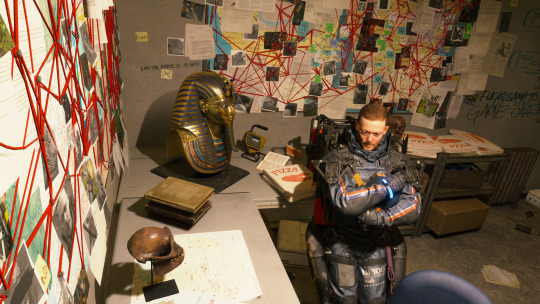
↑ Artist's rendering of the freelance lifestyle.
Sure enough, the first draft I submitted for workshop was a fragment of a non-fiction essay on the power of community and connection. The essay was set against the backdrop of New York Comic Con 2012, which had been my first time visiting the city, and looked at community from three angles: geek culture, which over the last decade or so had shown us how a word once used as an exclusionary epithet could be taken back by its targets and turned into a mainstream value; New York itself, which felt to me like an idealized microcosm of the United States—a land that, by design, could be home to anyone from anywhere and was better for it; and 3D printing, which I humbly predicted would soon revolutionize virtually every industry.

3D printing in particular was interesting to me as the next logical extension of the internet, allowing the exchange not only of ideas and information, but now physical objects—almost instantly, almost anywhere. We were already seeing its world-changing potential. Two men in Wales developed a blueprint for cool-looking prosthetic arms for kids that only cost twelve dollars in materials. Industrial 3D printers could print an entire home in twenty-four hours for four thousand dollars. Doctors could print custom-fitted surgical implants, and were already experimenting with 3D bioprinting—generating working organs out of real tissue cells. I’d even felt its impact at New York Comic Con over the years—namely in the cosplay scene, which was rapidly evolving as amateurs gained access to printable innovations.
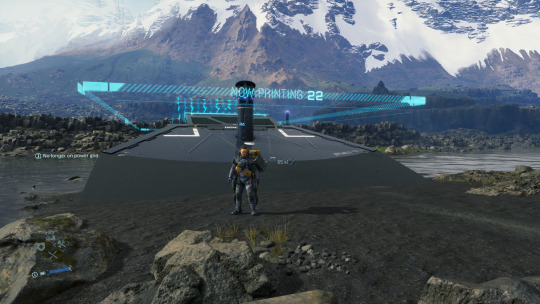
↑ 3D-printing a bridge is a metaphor for 3D printing, a bridge.
But each of these things had a dark side. We’d seen in recent years through swatting and organized harassment campaigns how “geek” communities are susceptible to gatekeeping, toxicity, and bigotry. 3D printing was a wild new frontier, and people had figured out how to print undetectable, metal-free guns before legislators had even considered the risk. This posed considerable concern for all large-crowd gatherings, New York Comic Con among them.
New York itself had a downside too, of course, which was that was only as good as its people, who could be anyone from anywhere. Every day lately felt like a reminder that New York had produced some of the worst people humankind had to offer.

I never finished the essay. Ironically, I failed to connect with any of my classmates. It was not the entry point to a new community. In fact, over the following months the experience proved powerfully demotivating. I tried to complete the essay on my own after the program ended, but the scope grew longer and more daunting every time I even glanced at it, and eventually I stopped opening the Word file altogether. Eventually I stopped writing anything. I ended 2019 more depressed, stressed, and isolated than ever.
------
Death Stranding essentially covers everything I had to say in that essay, and so much more. It’s a comprehensive meditation on human connection. Its narrative engine, the UCA, is a literal idealized microcosm of the United States. The game is obsessed with 3D printing, making it the primary way players shape the world and forge connections with other players. The protagonist, like the narrator of my essay (me), is more a witness than a character. And the game is both optimistic and cautionary, illustrating the healing power of community (the UCA) as well as the destructive potential of reactionary groups that form in silos (the Homo Demens terrorists and the MULE bandits). Eerily, it even touches upon the cosplay scene.

Even if COVID-19 hadn’t happened, Death Stranding’s timing would have been impeccable on a personal level, because I’d just given up on writing out of a general sense that no one would see it or care, which somehow both proved and undermined the point of the entire “community” essay—that connection is what gives anything meaning. If I’d known the extent to which Kojima and his team had been going through the same thought process as me, slaving for years and spending millions of dollars on making the same points I'd abandoned for fear no one would care, I might’ve kept that Word doc open.
Death Stranding is a game with many valuable takeaways, but maybe the most important to me is that somewhere out there are people who care—you just might not be able to see them. The only way to find them is to keep putting out your voice. So to anyone reading this: “This one’s for you.”

#death stranding#kojima productions#kojima#hideo#video games#games#gaming#ps4#playstation#analysis#criticism#review#reflections#3d printing#new york#brooklyn#writing#new york comic con#nycc#uca#symobolism
11 notes
·
View notes
Text
Death Stranding predicted the pandemic, and it's here to help

Hiking: The Game
Okay, so Death Stranding is a walking simulator. You might be wondering, then, what makes it any fun, especially since I just likened it to the grueling haul to the laundromat of pre-COVID days.
There are lots of ways the game distinguishes itself from the banality of real-life errands—its almost comically generous doling of praise for completed tasks, the slick but plausible sci-fi mecha gadgets, the heavy implication of meaning to your actions, the pants-shitting grandeur of its ominous setpieces—but I submit that the walking itself is fun, in much the same way that hiking a nature trail is more fun than walking to the bank.
Indeed, hiking seems to be the primary inspiration for Death Stranding’s core gameplay loop. The significance of the terrain on player movement and the constant need to adjust your balance and speed give walking in Death Stranding an uncanny resemblance to the real-life feeling of hiking a rugged nature trail. Often when hiking in real life, I’ll come to a drop too steep to step down and have to scan the area for a more gradual, roundabout route so I don’t slip and fall. It’s an unremarkable reality of walking on the surface of the planet, but Death Stranding gamifies it quite brilliantly. All terrain in the game has metadata baked in representing its steepness, or in the case of water, depth. You can view this as visual feedback by pinging your Odradek Scanner at any time. You can also use tools like ladders, climbing ropes, and a variety of footwear to help tame the land, but you have to plan ahead and bring the right gear, or else rely on the contributions or discarded leftovers of travelers who came before you.

Speaking of which, ever gone hiking and come across a log bridge or makeshift steps left behind by other hikers? Or just a hand-made sign that came in handy or gave you a chuckle? Part of the magic of hiking is in feeling connected with those who have traveled the same path. Death Stranding is a game about capturing that magic. You’re bound to other players as you use the gear they’ve left behind, rest where they’ve rested (marked by cairns that grow as more players rest in the same spot), and pee where they’ve peed (which, albeit crude, feels like sharing in a joke). You can even leave signs for each other, offering motivation or helpful info to unknown friends. I’m sure this was novel when Death Stranding released last fall, but in this new age of cabin fever, the ability to connect with strangers in positive ways while exploring a vast wilderness is a two-fold anodyne.
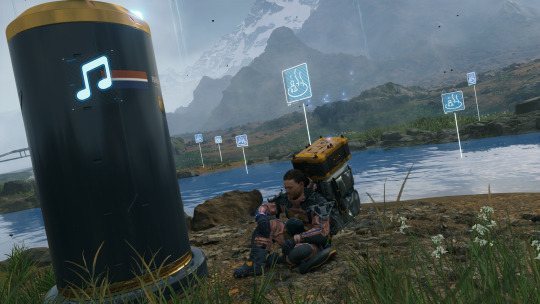
A Game For Our Times
A loaded freelance schedule prevented me from starting Death Stranding until around February, and in retrospect I’m glad. It’s impossible now to separate the experience of Death Stranding from the experience of life under quarantine. A lot of video games deal in visions of the post-apocalypse, but none have ever forecasted it so accurately. To play the game now is inherently a VR experience, no helmet required.

Okay, so it’s not like humanity has been wiped out (yet) or there are black specters of death polluting the landscape (well, debatable), but consider the basic synopsis:
Following a cataclysmic event, American survivors take shelter from an invisible threat, relying on a remote data transfer network and self-sacrificing delivery workers for survival.
Mere months after the game’s release, we’re living it.

Hideo Kojima’s games often serve up their analogies with a heavy hand, but Death Stranding was the first to make overt reference to real-world events before they even happened. (I will revise this claim when Metal Gear happens.) If this game had come out next fall instead of last, we’d be criticizing its obviousness. As it stands, Death Stranding feels freakishly prescient, as well as necessary. Not just for the relevant themes or ultimately uplifting message; but also for the way it empowers you to help others in a time when it’s hard not to feel helpless. For the opportunity it affords you to meditate. This is a zone-out game you can play infinitely. The soundtrack has an almost instant soothing effect, true to its own in-game description (“sure to send soul-soothing oxytocin surging around your system”). The entire game feels deliberately designed to help you cope with the very scenario it predicted. It’s not just a game about the pandemic—it’s a game for the pandemic.
Part 3 of 3 coming very soon!
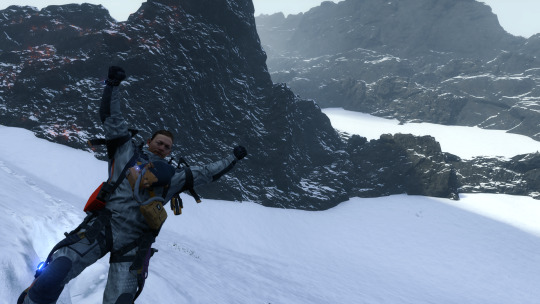
#death stranding#kojima#analysis#reflections#review#criticism#games#gaming#video games#hiking#walking simulator#metal gear#pandemic#covid-19#covid#covid 19#corona#virus
24 notes
·
View notes
Text
Death Stranding is the only walking simulator
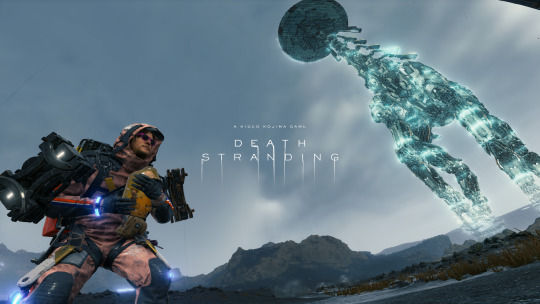
Before the pandemic, I relied on a local laundromat to clean my clothes. Once every week or two, I crammed as many articles from the hamper as would fit into an oblong laundry backpack that looked like it was meant for mountaineering. Then I loaded my laptop into a laptop bag so I could work on work while waiting for my clothes. I strapped on the backpack, slung the laptop diagonal over a shoulder, and took the three-liter jug of detergent in my right hand, leaving my left hand free to grab the house key and work the doorknob.
Then it was a half-mile trudge uphill to the nearest coin laundry. All the while I’d be fighting against gravity and the terrain, constantly using my cargo’s shoulder straps to adjust the weight distribution while dodging patches of dog doo and other pedestrians, sometimes veering off the sidewalk into the craggy outlands of South Brooklyn. When I had the energy, sometimes I tried to knock out other errands on the way, turning it into a strategic exercise in route mapping. Pharmacy-laundromat-supermarket-laundromat-home? Or laundromat-supermarket-laundromat-pharmacy-home? Could I squeeze in a café stop? How much could I carry total? Could I offload anything at any point?

As you might imagine from the above description, laundry day was kind of a drag, and I often dreaded it or put it off until even my least flattering pair of pants smelled from overuse. So I’m beside myself as I declare that Death Stranding, a game whose essential offering is to recreate the laundry day experience almost exactly, is one of the best games I’ve ever played. What might have been a disastrously unfun fetchquest buffet has instead proven a supremely engaging and thematically rich work, not to mention one of the most eerily prescient pieces of pop culture I can recall.

The First Walking Simulator
I’ve heard people pejoratively describe Death Stranding as a “walking simulator.” As far as I’ve seen, this is mostly an exclusionary term “gamers” use to describe games they don’t think belong in their hobby—narrative-driven titles like Gone Home and Life Is Strange, as well as more abstract arthouse titles like Bound and ABZÛ, neither of which have much walking.
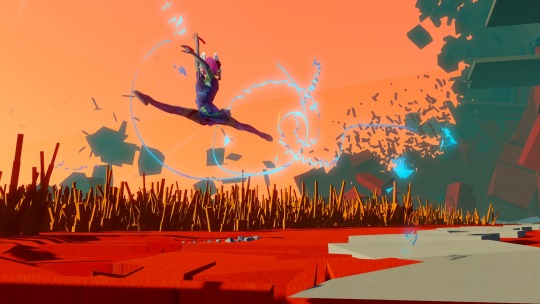
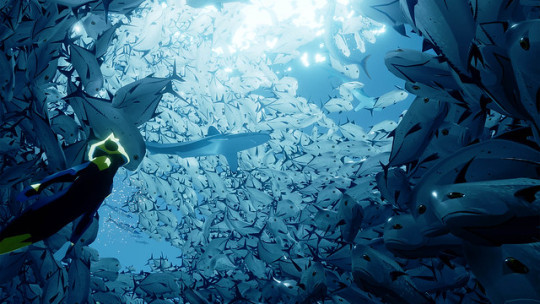
Bound and ABZÛ, two "walking simulators."
In one instance, I watched a Twitch streamer use the term in his rationale for why Death Stranding sounded too boring to stream. This was particularly ironic because he was streaming Killer 7 at the time, and had just finished (correctly) explaining to his viewers that Killer 7 was “basically a point-and-click game with walking.” I’m a Killer 7 fan myself, but I feel like Killer 7 fans are actually the perfect audience for Death Stranding, with its genre-hopping tone, lightweight mechanics, overwrought lore, and densely loaded symbology. They even share a number of specific ludonarrative concepts, such as having to clean up after the dead, the use of blood for bullets, and invisible enemies. Suda 51 and Kojima are probably the two most prominent Japanese game auteurs, as well as friends with a history of collaboration.
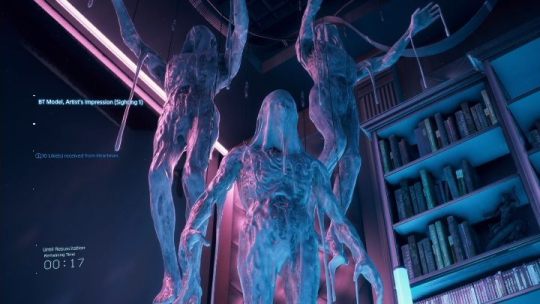


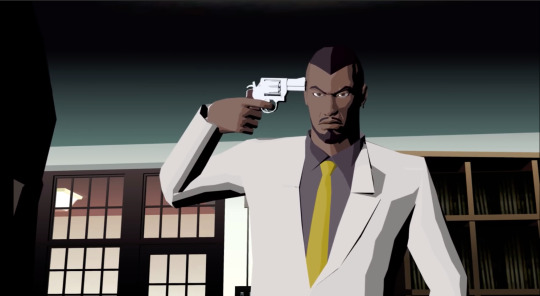
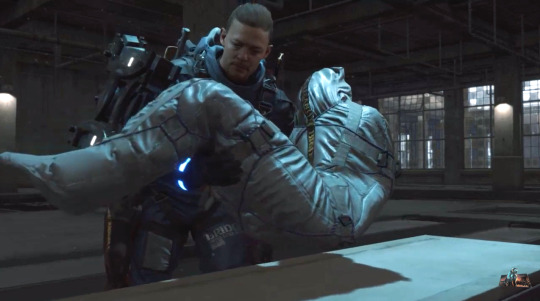


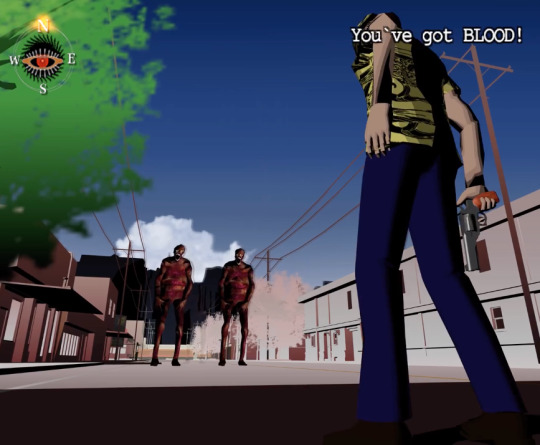
↑ Not to belabor a side point, but there's some thematic overlap is all.
Even putting all that aside, the so-called “walking simulator” genre essentially is the modern-day "point-and-click with walking." Killer 7 was just a decade early. Death Stranding, meanwhile, doesn't play like those games at all. Those games are essentially on rails, propelled forward solely by their narratives. In Death Stranding, you can shove the narrative completely aside and spend a hundred hours playing with hi-tech toys, hiking through the wilderness, 3D-printing infrastructure, off-roading on an electric motorcycle, placing terrorists in embarrassing positions, snowboarding down mountains, and hunting giant monsters. Death Stranding has more in common with Metal Gear Solid V or Grand Theft Auto than with any game that’s ever been called a walking simulator. The accusation irked me.
But the more time I spent with Death Stranding, the more I had to face the facts: it simulated walking really well. Better than any other game I could think of. Where in most games, topography amounts to little more than a cosmetic feature, in Death Stranding it affects your every step. Any incline steeper than forty-five degrees and you start to lose stamina. A steep decline affects your balance, as does turning. You can manipulate your shoulder straps in real time to slow your exhaustion and maintain equilibrium, but it comes at the cost of movement speed. Sprinting is efficient, but if you have a heavy load, one little rock on the ground could send you tumbling headlong down a mountain. Crossing streams drains stamina quickly and can be dangerous if you wade too deep, but the water also replenishes the canteen you use to restore stamina. Every on-foot trek from point A to point B is an exercise in mindfulness, because every step counts, and every misstep hurts. Virtually no other game offers this level of connection between player and terrain—least of all so-called “walking simulators,” where typically walking is just a side-effect of looking. “Looking simulators” is what those games are. Even games that have inventory systems with weight management elements don’t have real-time cargo shifting. So yes, I suppose Death Stranding is a walking simulator—the only one.
In writing this, I discovered Polygon has an amusing video that arrives at a similar conclusion, but it doesn't get into why simulated walking would make for an enjoyable game. I'll get more into this in Part 2 of this three-part piece, coming very soon!

#death stranding#gaming#games#video games#criticism#analysis#review#reflections#bts#killer 7#kojima#capcom#suda 51#bt#heaven smile#laundry#walking simulator#walking simulators#abzu#bound
5 notes
·
View notes
Video
youtube
In X-Men Origins: Wolverine you fight a five-story Sentinel with your bare hands, jam its engines by sticking parts of your body in them, then skydive through its face from the stratosphere. 10/10.
#wolverine#x-men origins#x-men#xmen#x men#logan#video game#game#gaming#ps3#playstation 3#xbox 360#raven#moments#montage#boss fight
0 notes
Photo
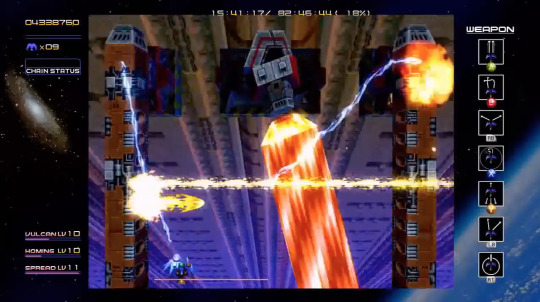


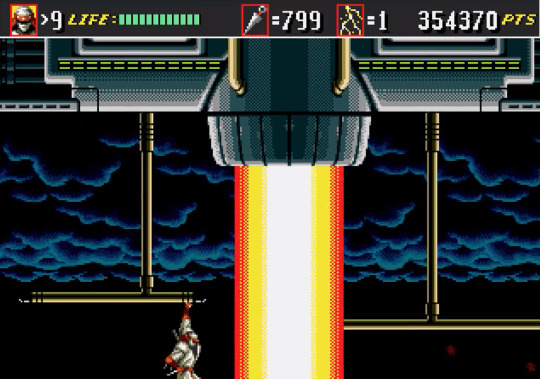
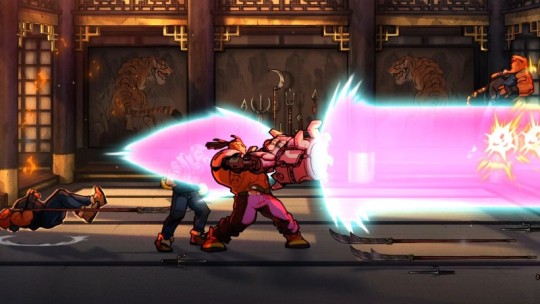
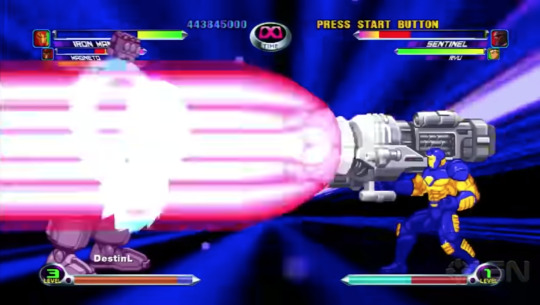
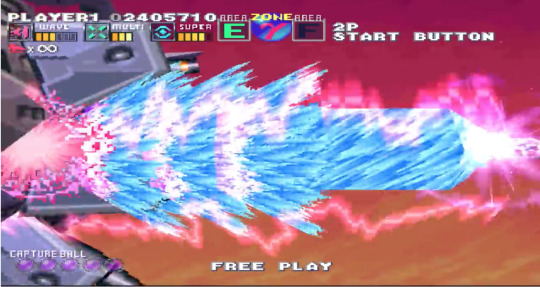
Chunky video game beams that go CHOOM.
0 notes
Photo


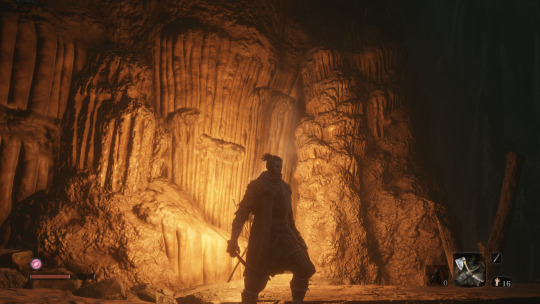
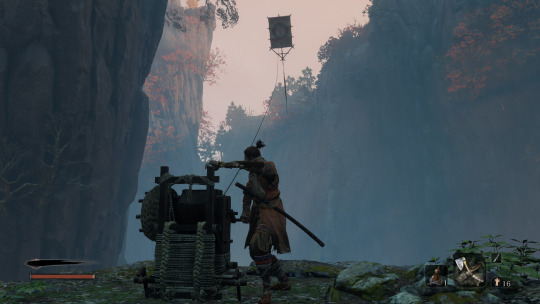

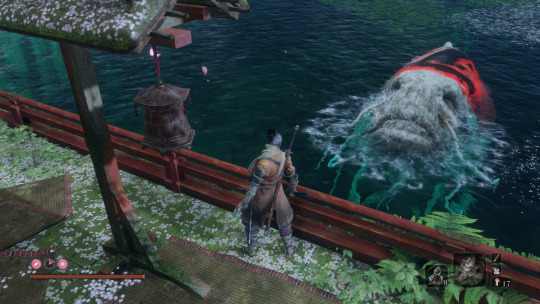
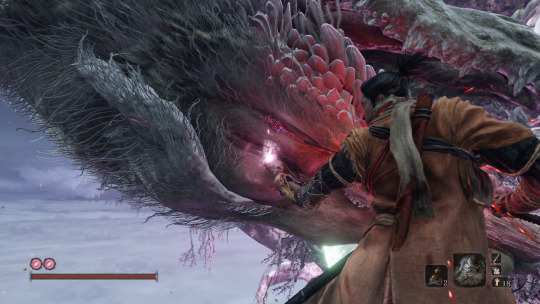


Sekiro is such a contoured odyssey.
22 notes
·
View notes
Text
Sekiro Focuses on Challenge, Slices Through Bullshit
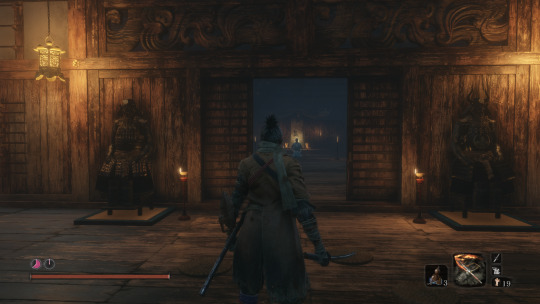
There’s a moment late in the first act of Sekiro where you reach a checkpoint labeled “Dojo,” just outside a room with a closed door. When you open the door, you find a blue-robed samurai, “Ashina Elite – Jinsuke Saze,” calmly waiting for you just on the other side in the seiza position. As you approach, he rises and greets you with a fierce iaijutsu style, unsheathing and resheathing his sword in two-slash bursts. One slash is enough to nearly kill you, but the second slash is sure to finish the job without giving you a chance to recover.
When you inevitably die, you revive back at that Dojo checkpoint, the door still open from before, and Jinsuke is back in his seiza position, staring you down. This was the first time I could recall a FromSoftware game placing a checkpoint within view of the boss. It was also the moment I affirmed that, for once, misery wasn’t the point. I’d already fought many bosses and minibosses in Sekiro, and though they were often challenging enough to kill me multiple times, at no point had the consequences for death felt punitive. In almost all cases, reinitiating the fight was as simple as traversing a short distance, made easy by Sekiro’s ability to jump and grapple and his relatively fast run speed. Granted, this particular miniboss was an extreme case, perched mere feet away from the checkpoint, but was not an exceptional case. Rather, he epitomized the shift in dynamic that sets Sekiro apart from FromSoft’s “Soulsborne” games, which, despite their many merits, I have long regarded with seething resentment. Sekiro, like other FromSoft games, demands you “git gud,” but unlike those other games, Sekiro actually wants you to.
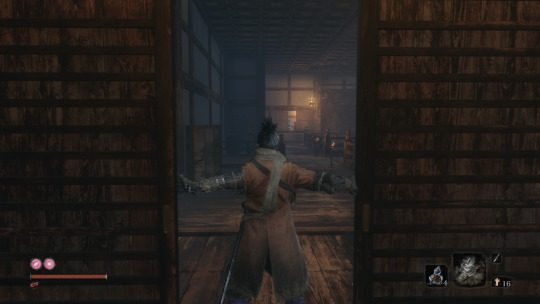
I spent at least an hour fighting Jinsuke Saze. The average duration of each attempt was less than a minute. I’m pretty sure he killed me at least eighty times, which stands to reason, given that he’s almost sure to kill you if he hits you at all. But the only penalty for each death was having to retry the fight. Wait, let me amend that: the only penalty for every two deaths—because in Sekiro, you can resurrect yourself mid-fight. (So when I say he killed me at least eighty times, what I actually mean is a hundred sixty times.)
Compare this to the part of Bloodborne that made me shelve it for two years: Micolash, Host of the Nightmare. By most accounts, he’s one of the “easiest” bosses in the game. Since he’s one of the few that isn’t just an enormous pile of erratically flailing limbs with inscrutable hitboxes, I can’t disagree. But he’s not easy, per se, since, like Sekiro’s blue-robed butcher, his attacks can hit hard enough to kill you if he catches you just once or twice. The problem is that each time you die, you have to repeat a maddeningly long and convoluted process to reinitiate the fight: call the elevator, wait for the elevator, ride the elevator back up, cross a metal footbridge, kill or evade two of the fastest, most dangerous skeleton enemies in gaming history, chase Micolash through a fog-laden labyrinth of corridors lined with more erratically flailing skeletons, and finally corner him in a chamber, where the fight actually begins. Furthermore, Micolash can bolt in a few different directions when you pursue him, meaning it’s never quite the same from one attempt to the next, and sometimes the chase can go on for a full minute or more.* If you manage to get through all that and knock out half his health, he flees and leads you on another even longer, more dangerous chase. More skeletons, some with hard-hitting ranged attacks, more ways to get lost, deadly drops, and a more elusive Micolash. When you finally find him, the only way to reinitiate the fight is to drop down on him from above, which guarantees some fall damage. Depending on how you performed in the first half, that might be all it takes to do you in. Nightmare, indeed.
(*There is an exploit to ensure he runs directly to the chamber every time, but it’s such a nonsensical process of AI finagling, you could only be expected to figure it out through lots of trial-and-error or consulting the web.)
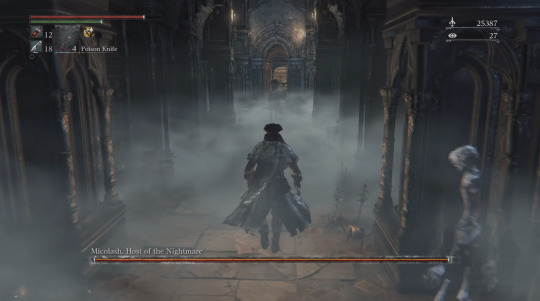
Micolash, too, is an extreme but not exceptional case. The problem with this encounter and many other moments in Bloodborne and the Dark Souls games is that the challenge is overshadowed by the hassle surrounding it. All told, actually fighting Micolash is a simple, rote process of dodging and counterattacking the same one move over and over. The defining aspect of the fight isn’t the challenge, it’s all the shit that gets in the way of fighting him to begin with. In moments like this, the game isn’t saying “git gud,” it’s saying “endure hardship.” Not the same thing. There are a variety of ways to stumble through Soulsborne games without getting that good, thanks to things like co-op and the ability to upgrade your stats and weapons. In fact, the punishment is often so severe that there’s high incentive to lean on these crutches rather than dedicating the inordinate amount of time required to get good. I myself only beat Bloodborne thanks to a very powerful co-op partner who got me through the final boss fight on my second try. I got through much of the game this way, and came away feeling like I’d poured so much of my time—in other words, my actual, real-life life—into the game without having much to show for it. The challenge, the player growth, was never the point—the nightmare was.

Ultimately the hardest thing about Bloodborne was tolerating its bullshit.
The problem I have with this approach to difficulty is that there’s no logical end to it. If difficulty is defined by impeding the player’s ability to improve, you may as well break one of my real-life fingers or pass me an infant each time I die and call it “difficulty.” It doesn’t feel like game design to me.
By contrast, Sekiro frequently forces you to learn and improve by pushing you through a funnel. Adapt or die immediately. It’s as clear-cut as the edge of a sword. But the game lets you work at it, because—of course—that’s the only way to “git gud” at anything. You will fail, but the focus is almost always on the challenge itself, so the game is happy to let you bang your head against it without interruption.
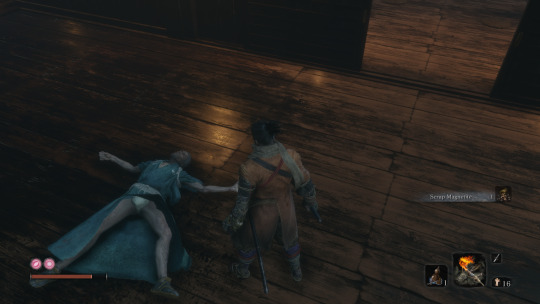
This hard-earned panty shot was more gratifying than beating the entirety of Bloodborne.
For me, that made all the difference. Not only is Sekiro the first FromSoft game of its sort to win me over, it’s now one of my all-time favorite games, and the first one I’ve ever Platinumed. Admittedly, this has emboldened me in my criticism of Soulsborne. As someone inclined to second-guess himself first and everyone else a distant second, I’m confident now that the problem wasn’t me—it was all that misery.

#sekiro#bloodborne#dark souls#soulsborne#fromsoftware#from software#fromsoft#games#gaming#video games#videogames#ashine elite#jinsukesaze#difficulty#challenge#games criticism#review#games journalism#editorial#platinum#trophy#micolash#host of the nightmare#game design
777 notes
·
View notes
Photo
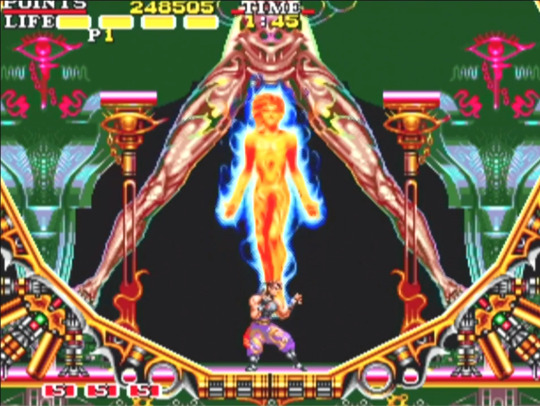
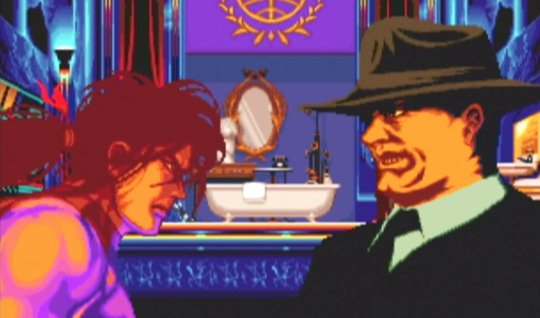




Osman, a.k.a. Strider Too.
2 notes
·
View notes
Text
My original Xbox blew up?
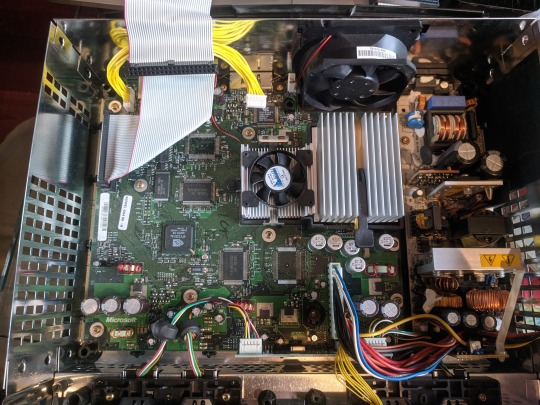
Several years ago my old boss gave me his original Xbox, which he'd had in storage for several years, and which I put in storage for several years more. The AV cable was missing, and I didn't have the space for its aircraft carrier-like heft in my old game room, which was just a corner of a garage. But I also owned one of the original Steel Battalion controllers, which was too cool an item to pawn off or otherwise let go to waste, so the Xbox was always in the back of my head as something to explore "someday."
After moving cross-country and into a bigger place, finally I had the game room of my fantasies, and almost immediately my attention turned to the Xbox. I quickly learned two important things:
1. The Xbox has a lot of shitty parts that break.
2. The Xbox is highly moddable.
In fact, there's still a burgeoning scene for the original Xbox online, and within that scene there seems to be an assumption that if you're still bothering with this machine, you're also modding it in some way.
Last summer I successfully "soft-modded" mine after discovering the DVD drive wouldn't read my Steel Battalion disc (a particularly elusive discovery because the drive read literally every other disc without issue). The soft mod imbued my Xbox with a variety of fancy new features, including the ability to rip games to the factory-installed HDD, theoretically removing the crappy DVD drive from the equation. Nice.
I played half an hour of Steel Battalion, confirmed that it was cool, and shelved my Xbox for half a year.
The problem was that the built-in HDD only has a few gigs of space. If I wanted to really get into Xbox gaming I needed to eliminate my reliance on the DVD drive altogether, and that meant upgrading the HDD to a size that could fit ALL my games. My Xbox collection is the smallest, most focused collection of games I have, focusing solely on exclusives, mostly of Japanese origin. But it's still too big to fit on the factory HDD, which is probably also going to break before long.

My entire Xbox collection. Glaring omissions: Otogi and Otogi 2. Jet Set Radio Future is there but the case is missing. Conversely, Ninja Gaiden is just an empty case. Those who scoff at Deathrow haven't played it with friends.
For someone with my low level of tech savvy, upgrading the drive was a daunting project unto itself, so I shelved the whole Xbox dream for the moment, then spent the rest of 2019 very busy.
Things have cooled down lately at work, and this week was finally going to be the week I attempted the HDD upgrade. But instead, I discovered the Xbox wouldn't turn on at all anymore! Sometime during the last several months of dormancy, it'd died peacefully in its sleep. No! It hadn't achieved its potential yet!
I opened up Reddit and the Xbox itself, hoping between the two I'd find an obvious culprit. For example, I learned most Xboces had a faulty component called a clock capacitor, which is a capacitor that functions as a clock, and which also leaks acid all over the motherboard. Mine was indeed leaking, but I didn't see any obvious signs of corrosion.
I also learned some of the power supply units were prone to desoldering themselves. I tried reflowing the solder with my very bad soldering skills and thoroughly oxidized soldering iron, but then I noticed: part of the power supply was covered in burn marks. I poked a resistor with my pliers and it crumbled. Oh.

Pretty sure the PCB isn't supposed to have griddle marks?
So I guess the power supply shorted out at some point and blew up a little, and boy am I glad it didn't set the house on fire. I'm also pretty glad it was this problem and not motherboard corrosion, which would've meant buying a new (old) Xbox altogether. A new (old) power supply is on the way from China as we speak. Hooray for tinkering!
0 notes
Text
Stockhkolm Syndrome in Ecco the Dolphin

Last week I tried Ecco the Dolphin on the Sega Genesis for the first time. I always thought it looked interesting and cool, even when I thought it was just a chill, nonviolent game about hanging out with sea life. Its down-to-earth art style seemed a mature departure from the hyper-cartoony depictions of most animals in games of its era, and Ecco’s nimble ability to dart through the ocean looked like such a joyful application of the Genesis’s “blast processing.”*
*I’m one of the many people who spent the last thirty years thinking “blast processing” meant Sega games could move faster, but recently read that it referred to a much more obscure and inconsequential feature, but that also, yeah, actually Sega games could move faster, that’s just not what blast processing meant. At this point I think we should let that be what it means.

So I was more than a little surprised when Ecco turned out to be a grueling, bleak, cosmic horror epic, with a time-travel storyline spanning millions of years and pulsing with psychedelia. What I’d mistaken for Sea World: The Game had more in common withA Wrinkle In Time and, I don’t know, the Old Testament. And yeah, that isinteresting and cool—much more than I’d signed up for—but the game also proved mercilessly difficult. The game is divided into large, scrolling slices of underwater terrain with sprawling, often tedious objectives. Death is frequent, and there are no checkpoints within each slice of the game. There’s a lot of pushing objects around using Ecco’s nose or sonar blasts, but unforgiving collision detection and tight quarters place an inordinate degree of focus on the player’s ability to expertly steer a character built for speed, not precision. While Sonic the Hedgehogis a game both starring a fast guy and about going fast, Eccostars a fast guy and constantly tells you to slow down and watch your corners. Enemies respawn and key items return to their original places pretty much as soon as you let them drift out of frame, so the game constant nullifies the time you’ve put in. You may not progress more than one or two loops in a single session. For a game with such a mobile character, forward movement is hard won.
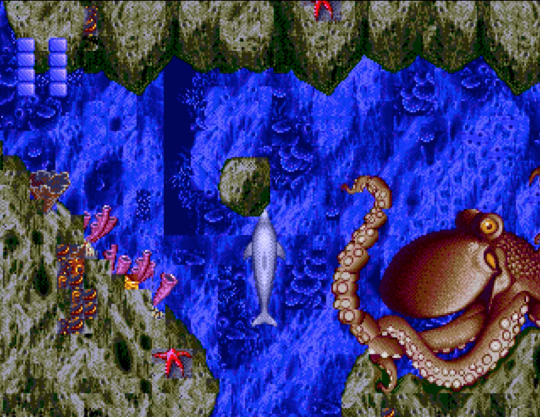
After my first session with the game, I was like, “That was interesting but totally unreasonable. I shan’t return here.”
The next evening, I returned there. I just couldn’t stop thinking about it—the moody atmosphere, thick as molasses; the intriguing storyline just starting to unfold; the dazzling setpieces; the screenshot I’d seen years ago of the boss of the game, a terrifying xenomorph-like creature whose face occupied most of the TV. I wanted to see that thing. I felt a little pathetic going back after having written it off (publicly on Twitter, no less), but in the elapsed day I’d realized the game was too compelling to dismiss so readily. Maybe the problem was me.

This has become a recurring dilemma with games that are mean but interesting. I have an ugly experience one evening and I think, “It would be best for my mental health if I never played this again. Life is too short and frustrating to spend your recreation time being miserable.” But then I’ll have this tug. “No,”I think. “I know there’s good to be excavated here—maybe even great. I think about those influential game reviewing websites that panned God Hand because they missed all the stuff that made it special. “Don’t be a God Hand panner,” I tell myself, and dive back in. I think it’s healthy to challenge yourself this way, to manage your expectations and approach things with an open mind. But I also wonder how much of oneself one should give to those who demand a lot. Ecco may be full of cool ideas, but it’s not better for wasting the player’s time. In fact, as I was playing it I compiled a bulleted list of simple ways the game could have been improved, and all of them were things that would’ve made the game less time-consuming. Is it worth all the death and do-overs to see something I could just YouTube? Is it forgivable that a game about a dolphin saving the world from prehistoric aliens makes me spend so much time doing banal chores better left to someone with a set of opposable thumbs? I hope my instincts eventually answer these questions the way they eventually did with Bloodborne (a game I tried to get into four times before swearing off permanently) and Monster Hunter (a game I tried to get into five times before it became one of my all-time favorite series), but for now I guess I’m still captive to the great blue abyss.
0 notes



